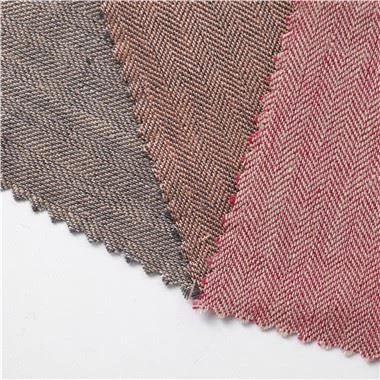Is Leather A Non-woven Fabric?
Feb 13, 2025
"Is leather a non-woven fabric?" This question seems simple, but it implies a confusion between two completely different materials. In fact, leather and non-woven fabric, one from nature and the other from modern industry, each has its own unique charm and application.


Leather Non-woven fabric
Leather: a natural gift tempered by time
Leather is a natural material made from animal skin through processes such as hair removal and tanning. It carries the mark of life, and every texture tells a unique story. The birth of leather can be traced back to the early days of human civilization, when our ancestors used animal skins to keep warm and make tools, thus beginning the long history of human use of leather.
The charm of leather comes from its natural characteristics. It is strong and durable, able to withstand the erosion of time; it is breathable and comfortable, bringing a warm touch when in close contact with human skin; it has rich texture, and every inch exudes a natural scent. From high-end leather goods to luxurious car interiors, from comfortable leather shoes to exquisite leather clothing, the application of leather permeates every aspect of our lives, highlighting taste and style.
However, the acquisition of leather also raises concerns about animal welfare and environmental protection. With the advancement of technology, the emergence of alternative materials such as artificial leather has provided consumers with more diversified choices.
Non-woven fabric: Convenient choice of modern technology
Non-woven fabric, as the name suggests, is a fabric that does not need to be spun and woven. It was born in the 20th century and is a product of modern industrial development. The production process of non-woven fabric is to directly bond fibers together through mechanical, thermal adhesion or chemical methods, forming a new type of fiber product.
The emergence of non-woven fabric has broken the boundaries of traditional textiles. Its production process is simple, the cost is low, and it is easy to produce on a large scale; it is light in texture, soft and breathable, with good filtration and isolation; it has a wide range of uses, from medical hygiene to household items, from agricultural cover to industrial filtration, the non-woven fabric is everywhere, bringing great convenience to modern life.
However, non-woven fabrics also face some challenges. Due to the fact that most of their raw materials are synthetic fibers, it is difficult to degrade them, and their large-scale use may burden the environment. Therefore, the development of biodegradable and environmentally friendly non-woven fabrics has become the trend of future development.
Leather and non-woven fabric: two completely different sides
Although leather and non-woven fabric are both called "cloth," they are two completely different materials.
Different sources: leather comes from natural animal skin, while non-woven fabric is a synthetic chemical fiber product.
Different characteristics: leather is strong and durable, breathable and comfortable, but expensive; non-woven fabric is light and soft, low cost, but relatively poor strength and durability.
Different applications: leather is mainly used in high-end leather goods, clothing, shoes and hats, etc., to show luxury and taste; non-woven fabric is widely used in medical, hygiene, agriculture, industry and other fields, focusing on practicality and convenience.
In short, leather and non-woven fabric, one represents traditional craftsmanship, and the other symbolizes modern technological power. They have their own advantages and play irreplaceable roles in different fields. In the future, with the progress of technology and the enhancement of environmental awareness, I believe that both materials will usher in more extensive development space and create a better life for mankind.







